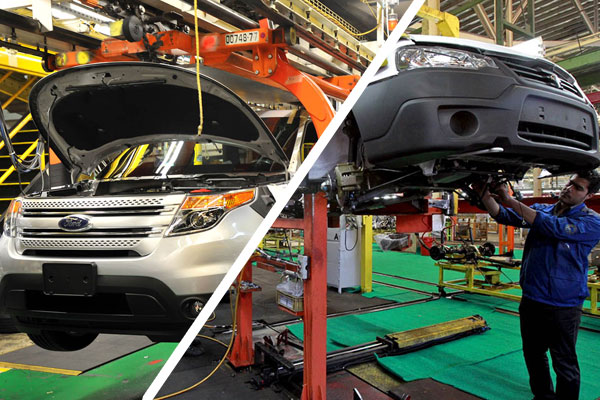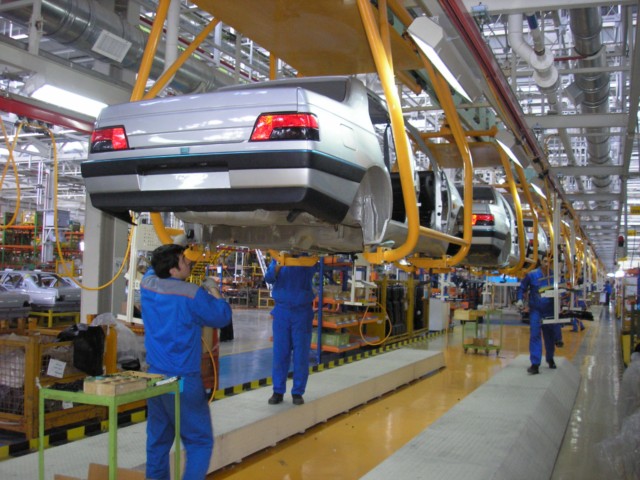صنعت خودرو در ایران- سه ماهه دوم 2015
BMI Industry View
Iranian vehicle production rose by 67.5% in 2014, to 1,090,846 units, according to statistics from the International Organization of Motor Vehicle Manufacturers (OICA). Breaking down the headline figure, Iran produced 925,975 passenger cars and 164,871 commercial vehicles. This makes Iran the 18th largest auto producer in the world.
At the present time, sentiment towards the Iranian auto industry remains dominated by the progress of ongoing negotiations between Iran and the P5+1 countries (the US, Russia, China, France, Britain and Germany) over Iran's nuclear programme. The two sides have until June 30 2015 to reach a permanent agreement. During this time, Iran will continue to receive around USD700mn a month from its frozen accounts, although key international sanctions on its energy and banking sector will remain in place.

In January 2015, BMI's Country Risk team reaffirmed its belief that the talks will be protracted, with risks tilted slightly to the downside. Overall, we believe that a solution to the nuclear issue will not be found by June 30, as political constraints will prevent both Iranian and US negotiators from making the significant concessions necessary to bridge existing technical obstacles to a deal. That said, a complete breakdown in talks is also unlikely in June, as the costs would be immense. Our core view therefore remains that talks will continue over the next two years through a series of partial deals and extensions. Following June 2015, we believe that a form of face-saving, partial agreement will be reached, which will allow for further talks.
It is clear that there remains strong demand for new vehicles from the Iranian population at present. As such, the potential for improved foreign relations between Iran and the West over the short to medium term has generated considerable interest from carmakers, none more so than French brands Renault and Peugeot, which controlled around a third of the market's output before they withdrew in early 2012 in line with Western sanctions. Indeed, it appears likely that Peugeot will seek some sort of deal with previous partner Iran Khodro Company (IKCO), while Renault is presently in talks with Saipa about buying an equity stake in its Pars Khodro subsidiary.
Iranian carmakers are also looking to expand their operations within the Middle East region. In this context, in January 2015, The Times of Oman reported that IKCO was considering Oman as a potential market for the exports and re-export of its products. IKCO participated in an exhibition of Iranian products held in Muscat during early January 2015, which included its Dena, Runna, Samand and Soren passenger cars as well as its Aryan minibus, Arya Truck and C1230 city bus. According to Iran's Minister of Industry Mining, and Trade, Mohammad Reza Nematzadeh, there is huge untapped potential for collaboration with Oman on the export and re-export of Iranian-manufactured cars.
Meanwhile, Iran Khodro Diesel (IKD) export manager Mohammad Hazrati said that it would be economically viable for Oman to export cars from Iran considering the close distance between the two countries, adding that IKD could be interested in setting up a commercial vehicle assembly unit in Oman via a joint venture (JV) with a local partner. Were Iranian carmakers to establish a local production facility, then this could prove transformative in terms of developing an indigenous Omani auto production and supply chain. BMI will monitor events and report on any future developments as they occur.
Iraq is another country where Iranian carmakers are looking to boost output. According to an October 2014 report in the Iran Daily, IKCO is now producing some 50 cars a day in Iraq, with the company set to boost output to 100 cars a day amid signs of stronger demand for cars within Iraq. IKCO's Deputy CEO for exports, Ali Elmi was quoted by the Fars news agency as saying that IKCO produces a variety of cars within Iraq, including the Runna, Samand, Soren, Peugeot Pars and Peugeot 405. The company also has several experienced engineers based at the Iskandariya factory to monitor the build quality of Iraqiproduced cars.

As well as the possibility of higher auto exports, Iran has also witnessed a rising trend in imports over the past calendar year, as the domestic political and economic backdrop improved slightly. Speaking to the Iran Daily in February 2015, the vice president of the Majlis Economic Commission, Iraj Nadimi, stated that car imports have increased since mid-March 2014.
However, Nadimi noted that imported cars cannot meet the country's new vehicle requirements, and hence pose little threat to the domestic auto industry. 'Auto manufacturers are not permitted to set prices for their products the way they want. They are required to observe the models set by the government. To bring car prices down, the first strategy is to do away with the monopoly in production and distribution, and prepare the ground for importing more cars,' he said. The main obstacle to foreign carmakers seeking to export cars to Iran remains the 100% tariff levied on all vehicle imports.
Looking forward, electric cars could start to play an increasing role within the Iranian auto sector. In this context, in January 2015, the Fars news agency reported that Iranian carmaker Diyar Khodro had unveiled the country's first domestically manufactured electric car, named Sabrina. According to the Tehran Times, the carmaker has begun trial production of the Sabrina and expects large-scale manufacturing to begin in the next Iranian calendar year, starting March 21. It plans to manufacture 42,500 units a year. According to managing director Mohammad-Taqi Khanlou, the Iranian government is negotiating a deal to deploy the Sabrina in the public transportation fleet.
گزارش تحلیلی بیزینس مانیتور- صنعت خودرو در ایران- سه ماهه دوم 2015

